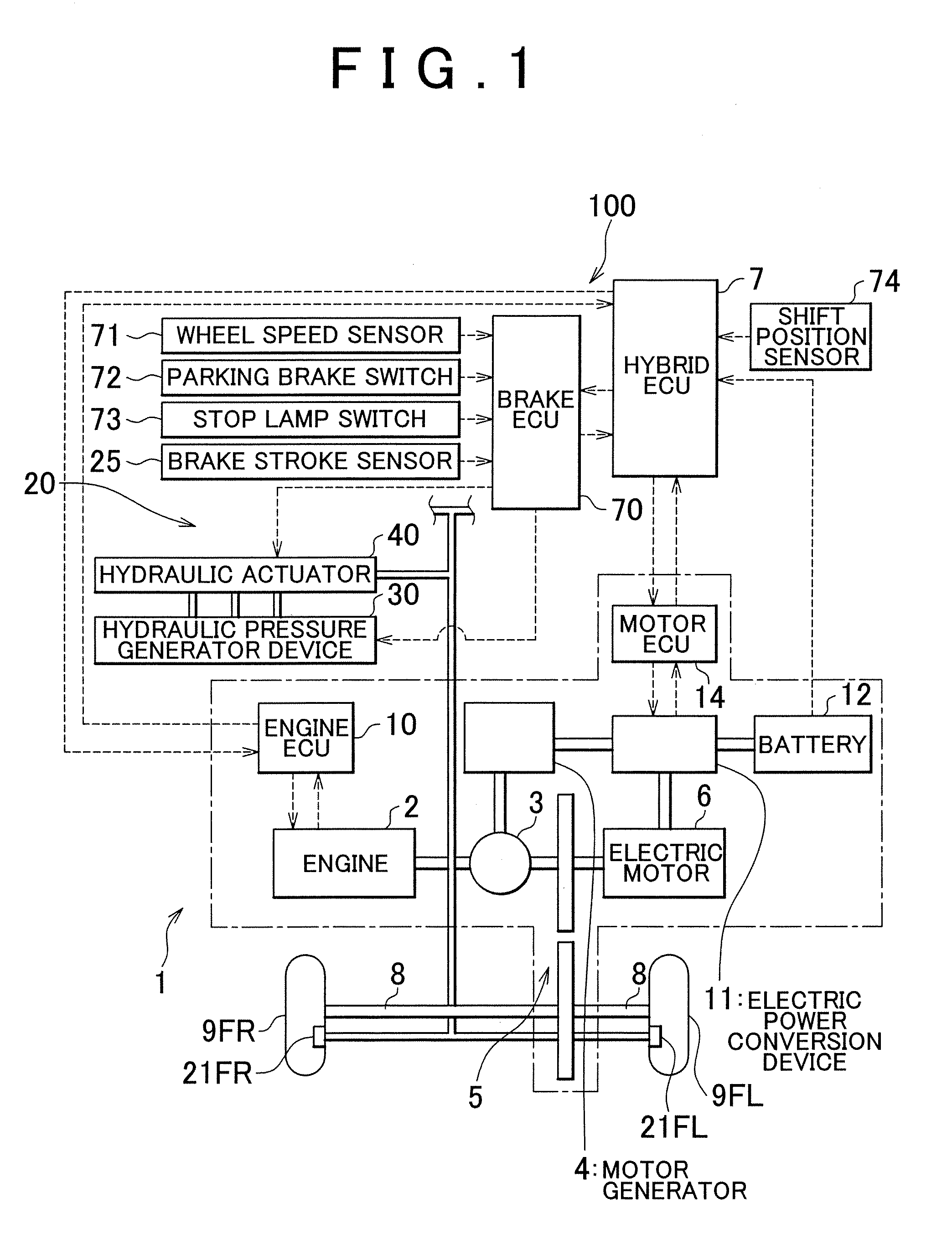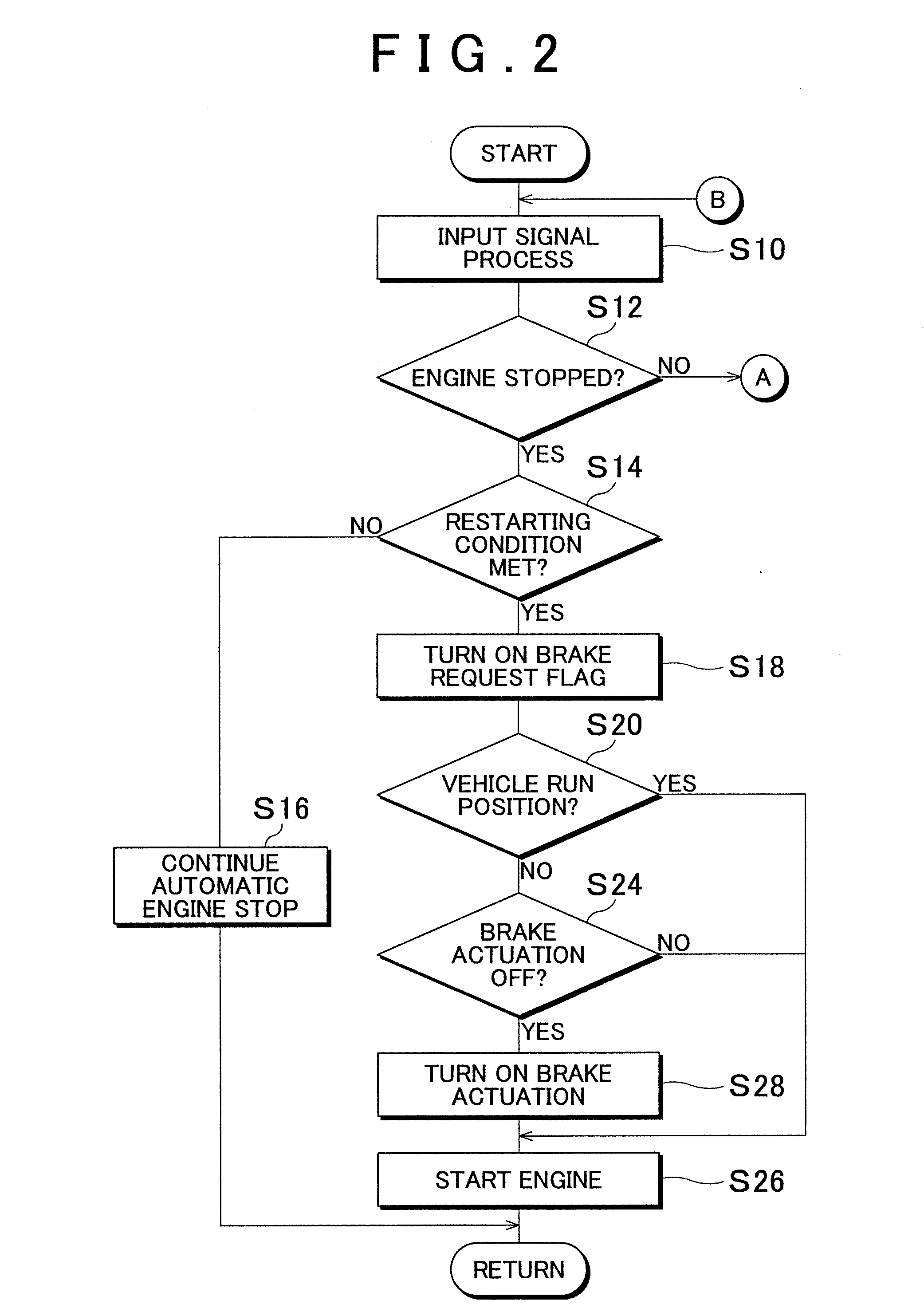Vehicle control apparatus and vehicle control method
a technology for controlling apparatus and vehicles, applied in the direction of machines/engines, braking components, anti-theft devices, etc., can solve problems such as vibration of vehicles, and achieve the effect of reducing vibration of vehicles
- Summary
- Abstract
- Description
- Claims
- Application Information
AI Technical Summary
Benefits of technology
Problems solved by technology
Method used
Image
Examples
first embodiment
[0031]FIG. 1 is a schematic construction diagram showing a vehicle to which a vehicle control apparatus in accordance with an embodiment of the invention is applied. A vehicle 1 shown in FIG. 1 is constructed as a vehicle adopting a so-called hybrid system, and comprises: an engine 2 as a drive source, a three-axis power splitting mechanism 3 connected to a crankshaft that is an output shaft of the engine 2, a motor generator 4 connected to the power splitting mechanism 3 and being capable of generating electric power, an electric motor 6 connected to the power splitting mechanism 3 via a transmission 5, and a hybrid-purpose electronic control unit (hereinafter, referred to as “hybrid ECU” with the electronic control unit being always termed “ECU”) 7 that controls the entire drive system of the vehicle 1. A front right wheel 9FR and a front left wheel 9FL as drive wheels of the vehicle 1 are linked to the transmission 5 via a drive shaft 8.
[0032]The engine 2 is, for example, an inte...
second embodiment
[0064]FIG. 5 is a flowchart illustrating a brake actuation control in accordance with a second embodiment. With reference to FIG. 5, the brake actuation control performed when the restarted engine 2 is stopped will be described.
[0065]If it is determined at S12 in FIG. 12 that the engine 2 is not stopped (NO at S12), the hybrid ECU 7 determines whether or not a condition for stopping the engine 2 is met (S40), on the basis of a result obtained at S10 by processing various input signals that indicate states of the vehicle. In this embodiment, it is determined whether or not the state of charge of the battery 12 is greater than or equal to a predetermined control value. Specifically, the SOC value indicating the state of charge is detected. On the basis of the information, the hybrid ECU 7 determines whether or not to stop the engine 2.
[0066]If the SOC value is less than the predetermined control value, it is determined that the condition for stopping the engine 2 is not met (NO at S40...
third embodiment
[0073]FIG. 7 is a flowchart illustrating a brake actuation control in accordance with the third embodiment. With reference to FIG. 7, the brake actuation control performed when the restarted engine 2 stops. Incidentally, contents of the third embodiment that overlap with those of the first embodiment or the second embodiment will not be described in detail again.
[0074]If at S12 in FIG. 2 it is determined that the engine 2 is not stopped (NO at S12), the hybrid ECU 7 determines whether or not a condition for stopping the engine 2 is met (S60), on the basis of a result obtained at S10 by processing various input signals that indicate states of the vehicle. In this embodiment, the hybrid ECU 7 determines whether or not the state of charge of the battery 12 is greater than or equal to a predetermined control value.
[0075]If the SOC value is less than the predetermined control value, it is determined that the condition for stopping the engine 2 is not met (NO at S60), and various input si...
PUM
 Login to View More
Login to View More Abstract
Description
Claims
Application Information
 Login to View More
Login to View More - R&D
- Intellectual Property
- Life Sciences
- Materials
- Tech Scout
- Unparalleled Data Quality
- Higher Quality Content
- 60% Fewer Hallucinations
Browse by: Latest US Patents, China's latest patents, Technical Efficacy Thesaurus, Application Domain, Technology Topic, Popular Technical Reports.
© 2025 PatSnap. All rights reserved.Legal|Privacy policy|Modern Slavery Act Transparency Statement|Sitemap|About US| Contact US: help@patsnap.com



